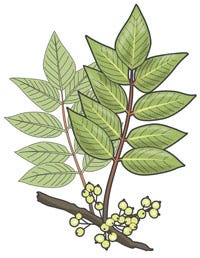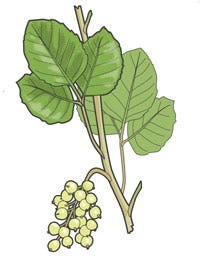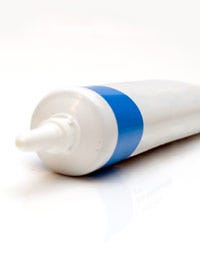How To Remove Poison Ivy Near A Vegetable Garden

Gabriela Medina/Getty
Feeling itchy after that hike? It could be allergic contact dermatitis, a.k.a. poison ivy. Three plants—poison ivy, poison oak and poison sumac—contain an oily substance called urushiol that causes a red, bumpy rash in many people (a lucky 25 percent don't react to it!).
If you think you've come in contact with these plants, wash the area with soap and water ASAP. If you do it within 15 to 20 minutes, you may stop a reaction, says Joseph Fowler, MD, clinical professor of dermatology at the University of Louisville. "After that, the urushiol has usually penetrated the skin and washing won't prevent a rash, but it can reduce the severity." Also wash any clothing, boots or tools that you wore or used; if the oil remains, it can cause a reaction weeks or months later.
Of course, the key to preventing a rash in the first place is knowing what the three culprits look like and avoiding them! Amy Stewart, author of Wicked Plants, helps you identify the perpetrators.

Poison sumac is a tree found in swamps and watery areas in the eastern U.S. It has oval leaves with a pointed tip that run in pairs along the stem, often with one leaf sticking out at the end; it produces cream-colored berries in the fall. (Photo by Dorling Kindersley/Getty .)

Poison ivy is a vine found in woods and open fields in the eastern half of the United States. The leaves are sometimes described as almond-shaped, and they grow in threes. They also produce creamy white berries in fall. (Photo by Dorling Kindersley/Getty .)

Poison oak is found in both eastern and western parts of the U.S. It looks more like a shrub and has leaves shaped like oak leaves, which turn red in the fall. (Photo by Dorling Kindersley/Getty .)
5 Treatment Options

A poison ivy rash may clear up on its own—but it could take 2 to 4 weeks! For faster relief, try these suggestions from John Wolf, MD , chair of the dermatology department at Baylor College of Medicine.
1. Apply an over-the-counter hydrocortisone cream (available at your local drugstore) 2 or 3 times daily.
2. Use an anti-itch lotion that contains calamine and menthol to ease the itch and inflammation.
3. Take an over-the-counter antihistamine such as Benadryl or Zyrtec, which quells itchiness by blunting your body's reaction.
4. Take an oatmeal bath with tepid water. Try a soothing product like Aveeno Skin Relief Bath Treatment; it's more concentrated than a self-made mix.
5. See a doctor if… OTC products don't help after 2 or 3 days, blisters are oozing (you may have an infection), sensitive areas (like eyes or mouth) are affected, or if you develop a fever higher than 100°F. (Photo by Shutterstock.)
This content is created and maintained by a third party, and imported onto this page to help users provide their email addresses. You may be able to find more information about this and similar content at piano.io
How To Remove Poison Ivy Near A Vegetable Garden
Source: https://www.womansday.com/health-fitness/womens-health/a5119/poison-ivy-101-108668/
Posted by: berryofficust.blogspot.com

0 Response to "How To Remove Poison Ivy Near A Vegetable Garden"
Post a Comment